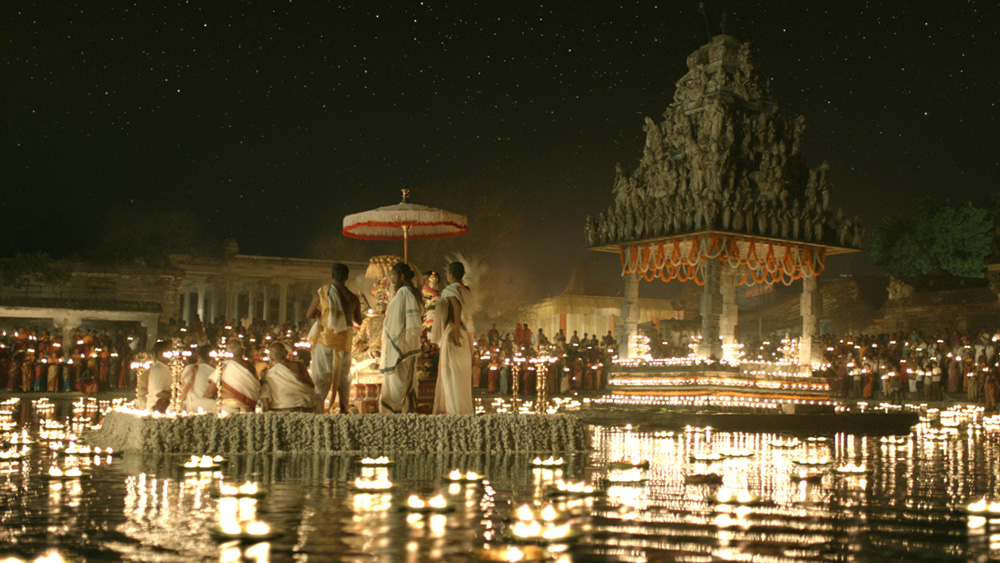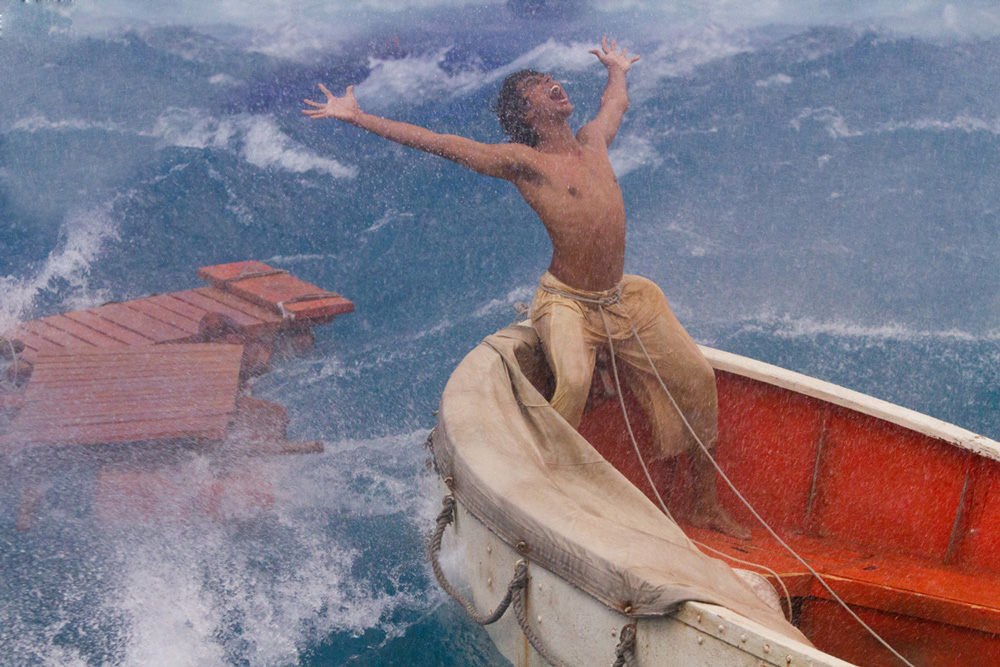
(C)2013 Twentieth Century Fox Home Entertainment LLC. All Rights Reserved.
What is the method used by master artist Ang Lee to brilliantly visualize the original work of “The Life of Pi: 227 Days adrift with a Tiger”?
2019.08.14
How to draw Pi's religious views
In the original story, Pi is depicted as having a unique personality, believing equally in Hinduism, Christianity, and Islam. It is not unusual for Japanese people to have a shallow sense of faith in multiple religions. However, Indians are generally more religious than Japanese, and believing in three religions at the same time means that the pie is quite different.
This characteristic of him gives the impression that he is a noble person, like a saint, and creates a misleading impression that ``Pai is a person who would never lie,'' thereby increasing the surprise of the ``second story.'' It's emphasized. However, as the story progresses, the Christian and Islamic elements are not particularly utilized and are forgotten.
Lee and McGee actively utilized Pi's religious views when making the film. As with the original work, Christianity and Islam are only briefly mentioned, but the visual expressions give an impression of the existence of God.

“Life of Pi: 227 Days Away” (C)2013 Twentieth Century Fox Home Entertainment LLC. All Rights Reserved.
For example, as a boy, Pi prays to a statue of the Hindu god Vishnu. The same shape seen from the side of this statue is used for the shape of the mountains (*7) connected to Moonnar, India, where his relatives lived when he visited. What is even easier to understand is the strange meerkat island (*8) that they encounter towards the end of their drifting life.At night, a panoramic image of the island is projected, and it is still a silhouette of Vishnu.
Also, in the scene where Pai kills and eats a fish (*9) while adrift, even though he is a vegetarian, he prays, ``Thank you Lord Vishnu, you saved our lives by transforming into a fish.'' . From these things, it can be seen that he is essentially a Hindu.
On the other hand, in the scene where the boat encounters a storm while adrift and lightning discharges spread across the sea surface, Pi interprets it as the arrival of God and cries out, ``Praise God, the omnipotent God!'' Here, it feels more like a reverence for nature than a specific religion.

“Life of Pi: 227 Days Away” (C)2013 Twentieth Century Fox Home Entertainment LLC. All Rights Reserved.
Additionally, Lee and Maggie avoid the overt depiction of miraculous experiences in the style of religious films, and by showing Richard Parker at the mercy of the storm and gasping for breath, Pi's attachment to God is too one-sided. I am also drawing. This also reminds me of the scene in which Pi, as a boy, confronts his atheist father (Adil Hussain).
*7 This was a matte painting done by Crazy Horse Effects , which also added a Christian church, a Muslim mosque, and a Hindu temple. The company also does a huge amount of matte painting to recreate the Indian landscape of the 1970s. The task became even more complex as these had to be expressed stereoscopically.
*8 This island is a floating island made of a single plant, whose roots are edible seaweed, and above the sea surface it resembles a tree. On the surface of the island, there are only countless meerkats and no other plants or animals. There are also swamps full of clear fresh water all over the island. Pi decides to eat the roots of plants and make a home in the trees. However, at night, the meerkats begin to climb the trees all at once, and the fish in the swamp die and float to the surface. Pi eventually discovers the fruit of a plant, but instead of a seed, it contains a human tooth. In other words, the seaweed that makes up this island turns strongly acidic at night, dissolving and absorbing animals. Pi realizes that this island is like a carnivorous plant and escapes again with Richard Parker on board. How do you understand this passage? The first one is honestly interpreted as ``a hallucination caused by Pai's inability to think normally due to fatigue due to hunger and dryness.'' The second view is that the existence of this island expresses the earth's ecosystem. In other words, the pyramidal structure of the food chain, with plants at the bottom, is reversed during the day and night. This can be interpreted as a strong awareness of the relationship between ``what you eat and what you can eat,'' which is also connected to the idea of reincarnation in Hinduism and Buddhism. In addition, the meerkats that stand upright and crowd together are a metaphor for humans, and it is possible to read this deeper into the story, suggesting that ``humanity will someday be rebelled against by the ecosystem.'' The third factor is what I see as the ``influence of magic realism.'' In other words, there is no particular reason or explanation, and the situation suddenly shifts to a mysterious situation that resembles a tall tale.
*9 This fish (Dolphinfish) is represented by animatronics created by Legacy Effects . The company also created the animatronics for the animals in the Tzimtoum's hold.
Compatibility with stereoscopic vision and expression of the sea

